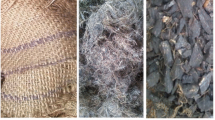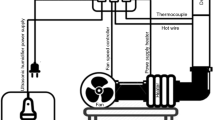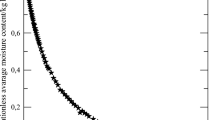Abstract
Removing moisture in the wet farm products through the open air ventilation is a traditional postharvest treatment method. However, its overall energy consumption is high and the drying time is long. Here, a combined system is proposed through integrating a bottom organic Rankine cycle (ORC) to a top closed farm products air drying cycle to save energy and decreasing the drying time. Based on a steady state thermodynamic model without any losses, a theoretical work on thermal performance the proposed system has been conducted. The key operation parameters and suitable operation conditions for both the prominent energy saving ratio and high moisture extraction characteristics have been analyzed. The calculation results showed both the prominent energy saving and high moisture extraction performances can be achieved at the low ORC evaporating pressure condition, but the optimal energy saving performance and the moisture extraction performance could not be achieved simultaneously. Increasing dew point temperature of the humid air leaving the drying chamber improves both the energy saving and moisture extraction performances of the drying system significantly. Under the working conditions in this research, with the dew point temperature value of the humid air leaving the drying chamber over 323 K, the optimal energy saving performance is achieved at a fixed low ORC evaporation pressure. But, the prominent energy saving and high moisture extraction performances could not be accomplished simultaneously, with the dew point temperature value of the humid air leaving the drying chamber lower than 323 K.












Similar content being viewed by others
Abbreviations
- ORC:
-
organic Rankine cycle
- MHTTD:
-
minimal heat transfer temperature difference
- d :
-
the absolute humid, g
- h :
-
enthalpy, kJ/(kg.K)
- m :
-
mass flow rate, kg/s
- p :
-
pressure, kPa
- P :
-
power, kW
- P e :
-
specific net work output, kW/kgw
- q :
-
specific heat flow rate, kW/kg
- Q :
-
heat transferred, kW
- r :
-
latent heat, kJ/kg
- T :
-
temperature, K
- w :
-
specific work, kW/kg
- 1,2,3,...:
-
stream number shown in Fig. 1a.
- a :
-
air
- c:
-
the calculated values
- Con:
-
condenser
- _c:
-
calculated value during iteration calculation
- d:
-
dew point
- Dc:
-
the drying chamber
- Ev :
-
evaporator
- in:
-
input heat, kW
- L :
-
latent heat of water
- min:
-
minimal value
- ORC:
-
the bottom ORC
- p:
-
pump
- Pr:
-
preheater
- Re:
-
regenerator
- s:
-
steam
- Sh:
-
superheater
- tot:
-
total efficiency
- t:
-
turbine
- w:
-
water
- β :
-
dimensionless moisture extraction rate
- η :
-
efficiency, %
- △t :
-
temperature difference, K
References
Onwude DI, Hashim N, Abdan K, Janius R, Chen GN (2018) Modelling the mid-infrared drying of sweet potato: kinetics, mass and heat transfer parameters, and energy consumption. Heat Mass Transf 54:2917–2933. https://doi.org/10.1007/s00231-018-2338-y
Doymaz I (2012) Evaluation of some thin-layer drying models of persimmon slices. Energy Convers Manag 56:199–205. https://doi.org/10.1016/j.enconman.2011.11.027
Somayeh TD, Nasser H, Mohammad S, Michel H (2014) Mathematical modeling of hot air/electrohydrodynamic (EHD) drying kinetics of mushroom slices. Energy Convers Manag 86:70–80. https://doi.org/10.1016/j.enconman.2014.05.010
Kumar M, Sansaniwal SK, Khatak P (2016) Progress in solar dryers for drying various commodities. Renew Sust Energ Rev 55:346–360. https://doi.org/10.1016/j.rser.2015.10.158
Tiwari S, Tiwari GN (2018) Grapes (Vitis vinifera) drying by semitransparent photovoltaic module (SPVM) integrated solar dryer: an experimental study. Heat Mass Transf 54:1637–1651. https://doi.org/10.1007/s00231-017-2257-3
Qin YZ, Fu H, Wang JS, Liu M, Yan JJ (2018) Waste heat and water recovery characteristics of heat exchangers for dryer exhaust. Dry Technol 36:709–722. https://doi.org/10.1080/07373937.2017.1351451
Cocco D, Deiana P, Cau G (2006) Performance evaluation of small size externally fired gas turbine (EFGT) power plants integrated with direct biomass dryers. Energy 31:1459–1471. https://doi.org/10.1016/j.energy.2005.05.014
Hugget A, Sebastian P, Nadeau JP (1999) Global optimization of a dryer by using neural networks and genetic algorithms. AICHE J 45:1227–1238. https://doi.org/10.1002/aic.690450609
Jebri M, Desmorieux H, Maaloul A, Saadaoui E, Romdhane M (2019) Drying of Salvia officinalis L. by hot air and microwaves: dynamic desorption isotherms, drying kinetics and biochemical quality. Heat Mass Transf 55:1143. https://doi.org/10.1007/s00231-018-2498-9
Sevik S, Aktas M, Dogan H, Kocak S (2013) Mushroom drying with solar heat pump system. Energy Convers Manag 72:171–178. https://doi.org/10.1016/j.enconman.2012.09.035
Djaeni M, Bartels P, Sanders J, Straten GV, Boxtel AJ (2007) Multistage zeolite drying for energy-efficient drying. Dry Technol 25:1053–1067
Meryem T, Kemal C (2016) Design and economic analysis of the flue gas condenser to recover latent heat from exhaust flue gas. Appl Thermal Eng 100:1007–1015. https://doi.org/10.1016/j.applthermaleng.2015.12.122
Liu YP, Aziz M, Kansha Y, Bhattacharya S, Tsutsumi A (2014) Application of the self-heat recuperation technology for energy saving in biomass drying system. Fuel Process Technol 117:66–74. https://doi.org/10.1016/j.fuproc.2013.02.007
Yue C, Wang B, Zhu B (2017) Investigation on the exhaust heat marine products drying integrated to a bottom sea water desalinization cycle. Energy 141:1905–1913. https://doi.org/10.1016/j.energy.2017.11.109
Aziz M, Kansha Y, Kishimoto A, Kotani Y, Liu Y, Tsutsumi A (2012) Advanced energy saving in low rank coal drying based on self-heat recuperation technology. Fuel Process Technol 104:16–22. https://doi.org/10.1016/j.fuproc.2012.06.020
Muhammad A, Pandji P, Bayu P, Bentang AB (2015) Integration of energy-efficient empty fruit bunch drying gasification/combined cycle systems. Appl Energy 139:188–195. https://doi.org/10.1016/j.apenergy.2014.11.038
Arsenyeva OP, Čuček L, Tovazhnyanskyy LL, Kapustenko PO, Savchenko YA et al (2016) Utilisation of waste heat from exhaust gases of drying process. Front Chem Sci Eng 10:131–138. https://doi.org/10.1007/s11705-016-1560-8
Han X, Yan J, Karellas S, Liu M, Kakaras E, Xiao F (2017) Water extraction from high moisture lignite by means of efficient integration of waste heat and water recovery technologies with flue gas pre-drying system. Appl Therm Eng 110:442–456. https://doi.org/10.1016/j.applthermaleng.2016.08.178
Maalouf S, Ksayer EB, Clodic D (2016) Investigation of direct contact condensation for wet flue-gas waste heat recovery using organic Rankine cycle. Energy Convers Manag 107:96–102. https://doi.org/10.1016/j.enconman.2015.09.047
Yue C, Zhu B, Wu Y, Han D (2017) Investigation on the waste heat air drying system with a bottom organic Rankine cycle. Appl Therm Eng 118:531–538. https://doi.org/10.1016/j.applthermaleng.2017.03.015
Wang Y, Zhao J, Chen G, Deng S, An Q, Luo C (2018) A new understanding on thermal efficiency of organic Rankine cycle: cycle separation based on working fluids properties. Energy Convers Manag 157:169–175. https://doi.org/10.1016/j.enconman.2017.11.079
Ei-Sebii AA, Shalaby SM (2013) Experimental investigation of an indirect-mode forced convection solar dryer for drying thymus and mint. Energy Convers Manag 74:109–116. https://doi.org/10.1016/j.enconman.2013.05.006
Acknowledgements
The authors acknowledge financial support from the project funded by the Program of Jiangsu Province Nature Science Foundation of China (BK20191276), the Fundamental Research Funds for the Central Universities (1002-XAA18031) and the National Scholarship Council.
Author information
Authors and Affiliations
Corresponding author
Additional information
Publisher’s note
Springer Nature remains neutral with regard to jurisdictional claims in published maps and institutional affiliations.
Rights and permissions
About this article
Cite this article
Yue, C., Tong, L. & Zhang, S. Parametric analysis on the low temperature wet air waste heat recovery through an organic Rankine cycle. Heat Mass Transfer 56, 2333–2343 (2020). https://doi.org/10.1007/s00231-020-02862-5
Received:
Accepted:
Published:
Issue Date:
DOI: https://doi.org/10.1007/s00231-020-02862-5




